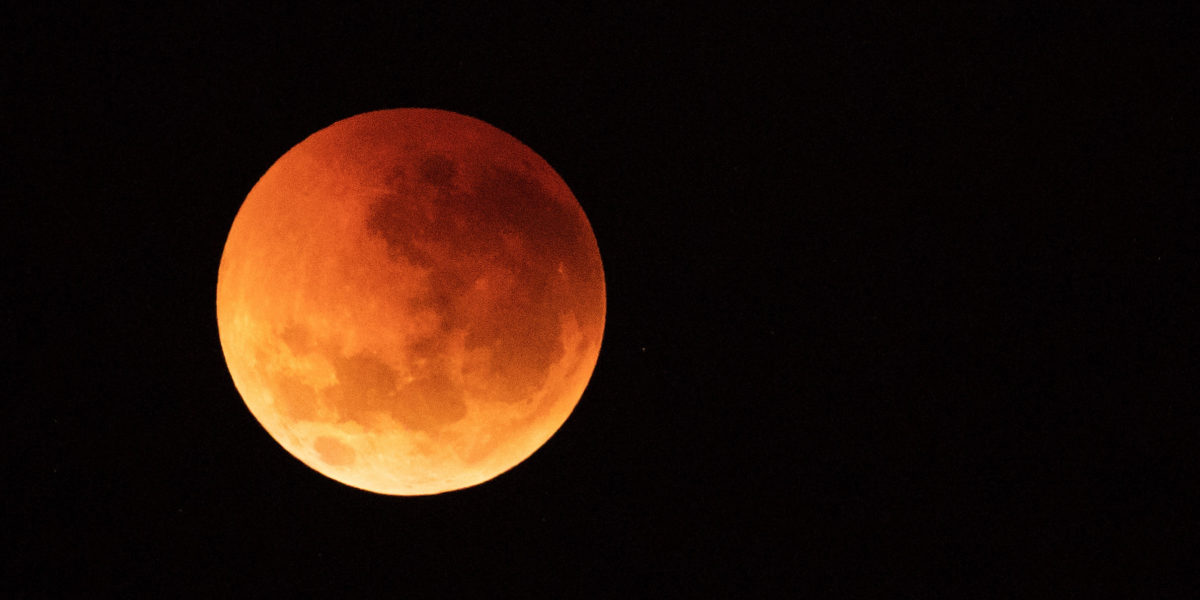
When the Moon Hits Your Eye Like Red Coals in the Sky
That’s a blood moon, or total lunar eclipse, and it’s worth setting an alarm for this Wednesday morning.

Cameron Spencer/Staff/Getty Images
Sometimes it seems like every full moon gets a click-bait name. The one occurring May 26 has the particularly over-the-top moniker of the Super Flower Blood Moon. That mouthful certainly sets expectations for … something, and it’s hard to imagine a moon could live up to it. But Wednesday’s just might, and we recommend setting an alarm if it looks like the skies will be clear where you live.
What’s in a name? Let’s break it down. The “Flower” part is just a traditional name given to any full moon in the month of May. “Super” is a quasi-scientific way to describe a full moon that is slightly larger than usual because it’s a little closer to the Earth than average.
It’s the “Blood” part that will make the moon a particularly compelling sight this week. It will be a called that because it will fall into eclipse early Wednesday, turning the surface an eerie coppery-red color.
What’s Going On?
Lunar eclipses happen when the Earth, sun, and moon happen to line up in such a way that our planet casts a shadow on the face of a full moon. Unlike a solar eclipse, it’s perfectly safe to look at a lunar eclipse without protective eyewear. More good news: You don’t need any special equipment to view the event. The moon is, after all, the biggest and most obvious thing in the night sky. A telescope would just restrict your field of view, so don’t bother.
(Full disclosure: You will actually need one piece of equipment to view the eclipse: an alarm clock.)
This event gets underway early. In San Francisco, for example, the first hint of shadow falls across the moon on May 26 at 1:47 a.m. The shadowing begins in earnest at 2:44 a.m., and totality—the most dramatically red phase—starts at 4:11 a.m. That phase lasts 14 minutes, and then the moon will gradually come out of shadow over the course of the next hour and a half. The times change depending on your exact location; you can look up when you should set your alarm at timeanddate.com.
How Do I See It?
To view the eclipse, go somewhere with a very low western horizon. This event will unfortunately occur not long before the moon sets, so it won’t be very high in the sky. Everyone viewing from sites west of the Rockies should get at least a few minutes of totality, but the quality of your experience will depend on how unobstructed of a view you can find.
